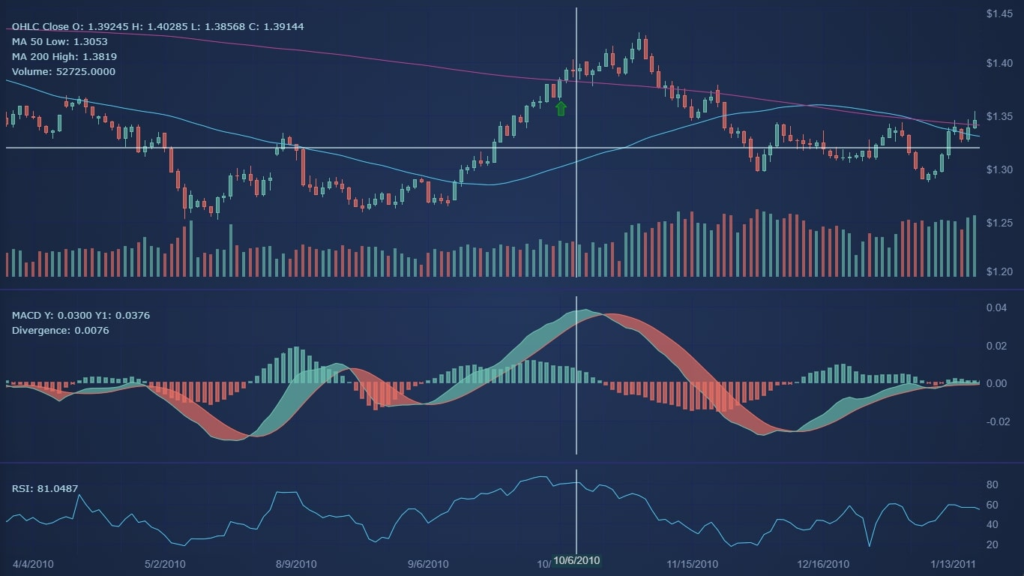Among the numerous frameworks available, React stands out for its flexibility and efficiency in building interactive user interfaces. When paired with charting libraries, it becomes a powerful tool for visualizing complex data. Whether you’re a seasoned developer or new to the world of data visualization, mastering React charts can elevate your projects to a new level.
One developer from SciChart, a company known for its high-performance charting solutions, shared their perspective: “React’s component-based architecture aligns perfectly with modern charting needs. It enables developers to build reusable, efficient components, which is invaluable when dealing with dynamic datasets and interactive charts.”
Understanding the Role of React in Charting
React is a JavaScript library designed for building user interfaces, particularly single-page applications. It emphasizes a component-based structure, allowing developers to break down complex UIs into manageable, reusable pieces. This modularity is particularly useful when integrating charts, as it simplifies data handling and updates.
In charting, React provides the framework to efficiently manage state and render changes. Data visualization often involves large datasets that require real-time updates, and React handles this with its virtual DOM. By updating only the necessary components, React ensures smooth performance, even when working with resource-intensive JavaScript charts.
Choosing the Right JavaScript Charting Library for React
The success of implementing React charts hinges on selecting the appropriate charting library. Several libraries cater specifically to React charts or integrate seamlessly with it. These libraries differ in their capabilities, ease of use, and performance, so understanding your project’s requirements is crucial.
Recharts
Recharts is a popular choice among React developers for its simplicity and ease of use. Built on top of D3.js, it abstracts many of the complexities, providing a more accessible API. Recharts is ideal for projects where developers need quick and straightforward charting solutions without compromising on customization options. It supports a variety of chart types, including bar, line, and pie charts.
Victory
Victory is another robust library designed for React and React Native. It offers a wide range of charts and is highly customizable. Victory’s strength lies in its modularity, allowing developers to compose complex data visualizations from smaller components. Its intuitive syntax makes it a favourite for developers seeking a balance between simplicity and power.
Chart.js with React
While not inherently designed for React, Chart.js is a versatile JavaScript charting library that integrates well with React through wrappers like react-chartjs-2. Chart.js is renowned for its simplicity and stunning visual effects, making it a solid choice for projects that prioritize aesthetics alongside functionality.
Highcharts and React
Highcharts is a veteran in the charting space, known for its rich feature set and interactive capabilities. Though originally developed for plain JavaScript, Highcharts offers a React wrapper that allows seamless integration. It is particularly suited for projects that require detailed, interactive charts like stock market visualizations or business analytics dashboards.
SciChart
This one stands out for its focus on high-performance, real-time charting. While it caters primarily to industries like finance, engineering, and scientific research, its React support brings its advanced features to broader applications. With GPU acceleration and an emphasis on performance, SciChart is an excellent choice for projects handling vast datasets or requiring intensive computational visualizations.
Setting Up React Charts: A Step-by-Step Guide
Integrating a charting library with React involves several steps. While each library has its specifics, the general process follows a similar pattern. Let’s explore how to set up a basic React chart using a hypothetical charting library.
1. Install the Library
The first step is installing the desired charting library and any necessary React wrappers. This can usually be done via npm or yarn. For example:
bash
Copiază codul
npm install recharts
2. Import and Configure the Chart Component
Once installed, import the relevant chart components into your React application. Define the data structure and customize the chart according to your needs. Here’s a simple example using Recharts:
javascript
Copiază codul
import { LineChart, Line, XAxis, YAxis, Tooltip } from ‘recharts’;
const data = [
{ name: ‘Jan’, value: 30 },
{ name: ‘Feb’, value: 20 },
{ name: ‘Mar’, value: 50 },
];
const MyLineChart = () => (
<LineChart width={400} height={300} data={data}>
<XAxis dataKey=”name” />
<YAxis />
<Tooltip />
<Line type=”monotone” dataKey=”value” stroke=”#8884d8″ />
</LineChart>
);
export default MyLineChart;
3. Manage Dynamic Data
In real-world applications, data is often dynamic. React’s state management makes handling such data straightforward. Using hooks like useState and useEffect, you can fetch and update data efficiently.
javascript
Copiază codul
import React, { useState, useEffect } from ‘react’;
import { LineChart, Line, XAxis, YAxis, Tooltip } from ‘recharts’;
const DynamicLineChart = () => {
const [data, setData] = useState([]);
useEffect(() => {
fetch(‘/api/data’)
.then(response => response.json())
.then(data => setData(data));
}, []);
return (
<LineChart width={400} height={300} data={data}>
<XAxis dataKey=”name” />
<YAxis />
<Tooltip />
<Line type=”monotone” dataKey=”value” stroke=”#8884d8″ />
</LineChart>
);
};
export default DynamicLineChart;
Optimizing Performance in React Charts
When working with JavaScript charts, performance is a critical consideration, especially when dealing with large datasets or real-time updates. React’s virtual DOM provides a solid foundation, but additional measures can further optimize performance.
Memoization
React’s useMemo and React.memo are powerful tools for preventing unnecessary re-renders. By memoizing components or computationally expensive calculations, you can ensure your charts remain responsive.
Debouncing and Throttling
For real-time data, frequent updates can overwhelm the browser. Techniques like debouncing or throttling limit the frequency of updates, striking a balance between performance and responsiveness.
Lazy Loading
Lazy loading allows components to load only when needed, reducing the initial load time. This is particularly useful for applications with multiple charts or complex visualizations.
GPU Acceleration
Libraries leverage GPU acceleration for rendering. This offloads computational tasks to the GPU, significantly boosting performance for resource-intensive visualizations.
Styling and Customizing React Charts
Visual appeal plays a crucial role in data visualization. Customizing charts to match the design language of your application enhances user experience. Most charting libraries offer extensive styling options.
Themes and Colours
Libraries often come with predefined themes, but they also allow custom theming. You can define colour palettes, fonts, and other stylistic elements to align with your brand.
Interactive Features
Interactive features like tooltips, zooming, and panning enhance the usability of charts. These features allow users to explore data in detail, making the visualization more engaging.
Responsiveness
Ensuring your charts are responsive is essential for modern web applications. Most libraries offer configuration options or components that adapt to different screen sizes, providing an optimal viewing experience across devices.
Real-World Applications of React Charts
React charts are used across various industries and applications. In finance, they help visualize stock trends and market analysis. In healthcare, they track patient data and medical trends. In e-commerce, they provide insights into sales performance and customer behaviour. Regardless of the industry, the ability to present data visually can drive informed decision-making.
Future Trends in React Charting
As technology evolves, so do the tools and techniques for data visualization. The integration of artificial intelligence (AI) and machine learning (ML) in charting is a promising trend. These technologies enable predictive analytics, helping businesses forecast trends and make proactive decisions.
Another emerging trend is the use of WebAssembly to enhance performance. By running computationally intensive tasks in a low-level language, WebAssembly can further improve the performance of JavaScript charts, particularly in real-time scenarios.
Conclusion
React charts offer a powerful means of visualizing data, making complex information accessible and actionable. By choosing the right charting library and leveraging React’s strengths, developers can create interactive and efficient visualizations that enhance user experience. Whether you’re building a simple dashboard or a complex analytics platform, mastering React charts is a valuable skill in the modern developer’s toolkit.
With the continuous advancement of technologies and tools, the future of data visualization in React promises to be both exciting and transformative.







